Without delving into the history of the creation of traffic rules, we can confidently say that they were compiled to reduce the number of emergencies. Actually, a speed limit is introduced for the same purpose. After all, the slower the car moves, the less the likelihood of an accident.
Speed Limit Sign
Before taking any action on the road, the driver must react. The time required for him to do this is called the reaction rate. Each person, of course, is individual. Based on this, the faster the car moves, the greater the distance it will have time to overcome, while the driver reacts to the danger that arose on the roadway and stops. Accordingly, the slower it moves, the higher the likelihood that the driver of the vehicle will have time to complete the maneuver in order to avoid a traffic accident.
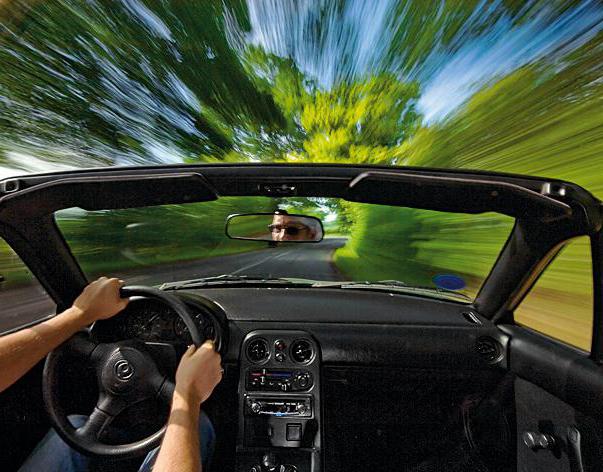
In traffic rules, the speed of movement is limited depending on the location of the carriageway along which the vehicle is moving. For orientation on the road, special signs are installed, according to which the driver "reads" the rules for driving a certain territory. There are only three of them:
- The prohibiting sign "Speed limit" looks like a circle with a red border, in the center of which a number is indicated. This number is the maximum allowed. In the area of its operation, it is forbidden to drive a vehicle at a speed higher than indicated, and will be punishable by a fine.
- There is a prohibition sign "Minimum speed limit". It looks like a blue circle with a white number in the center. This sign recommends moving at a speed no lower than the number on it says. Movement without accounting also threatens punishment.
- Recommended Speed is a sign that is a blue square with a white number in the center. This element of the road does not prohibit or limit anything. It only indicates that it would not hurt for all vehicles on the stretch of road where it operates to travel at that speed (the number indicated on the sign).
The last two elements of the road are often confused, so drivers need to be careful.
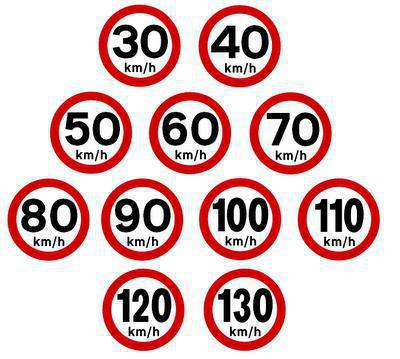
In addition to signs, road marking is used to adjust speed limits. On the pavement, a white circle is applied with paint, in which the number is indicated. This number is the maximum value of speed on this section of the road. Most often, the sign on the asphalt is painted with white paint, but sometimes to attract the attention of drivers - and red. Thus, this markup is associated with a prohibition sign.
Action of signs
All road elements regarding speed limits are divided into:
- Global.
- Local.
- Special.
Already depending on what type the sign belongs to, the action of the speed limit is also determined.
The global ones are those that have influence throughout the country. So, these include prohibitions on speeding within cities at 60 km / h, outside - 90, and on motorways - 110. Also, the well-known limit in yard areas of 20 km / h should be included here.
Local restrictions are introduced on certain sections of the road. This is necessary to increase or decrease the speed limits.
Special restrictions include towing, riding with a trailer, and more.
Speed limit in the village
The city has an increased risk of emergency situations involving pedestrians. After all, they are the same participants in the movement, like drivers of vehicles.The latter must timely notice pedestrians on the road and take measures to prevent accidents.
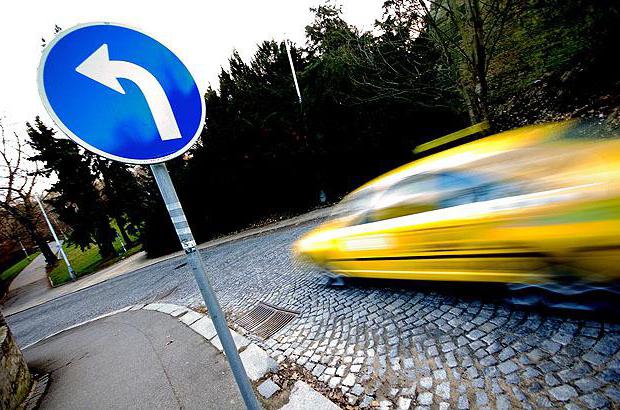
According to traffic rules, the maximum permissible speed in the city is sixty kilometers per hour. The exception is towing. Here the allowable limit is fifty. And in the courtyards, adjacent territories, parking, the speed limit is twenty kilometers per hour.
Driving on roads, according to permissible limits, drivers of vehicles reduce the risk of accidents.
Restrictions outside the community
Outside the city is an empty road, almost every driver had thoughts to ride with the breeze. And then in the news we hear that someone lost control and had an accident, unfortunately, sometimes with a fatal outcome. Therefore, unless otherwise prohibited, the limits outside the city for vehicles are as follows:
- Cars with a maximum technical weight of up to 3.5 tons - ninety kilometers per hour. On the motorways - 110.
- A motorcycle is less than ninety kilometers per hour.
- Bus and cars with more than nine seats, including a driver, up to 90.
- Trucks with a technical weight of more than 3.5 tons - seventy kilometers per hour. On the motorways - 90.
- Towing - 50.
- Trucks carrying people in the back - 60.
- Vehicles with dangerous goods - a maximum is set upon agreement on the conditions of transportation.
- For drivers who do not have two years of driving experience and are learning to drive (an instructor should be sitting next to them) - 70.
Speed limits for trailer vehicles
It should be understood that the additional load on the car makes the braking distance longer. Accordingly, a vehicle in tandem with a trailer should not move at the same speed as a vehicle without it. Therefore, the rules prescribe the permissible limits for vehicles with a trailer.
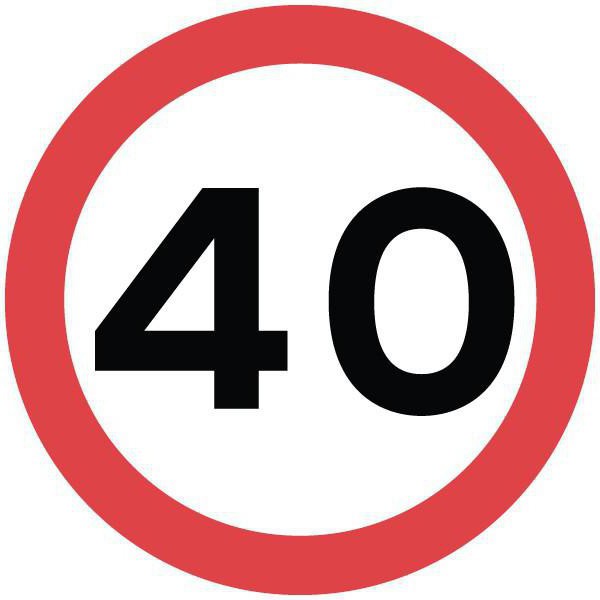
SDA speed limit as follows:
- on the highway - one hundred and ten kilometers per hour. With a trailer - 90;
- Outside of cities - ninety kilometers per hour. With a trailer - 70;
- on the roads of settlements, the maximum permissible speed is sixty kilometers per hour; the presence of a trailer does not affect the restrictions in the city.
The maximum speed for traveling outside the village varies. In the city, it remains unchanged. That is, the movement of the vehicle together with the trailer takes twenty kilometers per hour from the first one from the maximum permissible speed.
Fines
For a novice driver, one rule should be learned - traffic rules are limited and do not have the ability to cover all situations. Therefore, it should be remembered that you do not need to do everything that is not limited by the Rules of the road. So, for example, on the roadway, the allowed speed is sixty kilometers per hour, but now it is raining. Based on the circumstances, it will be safer to abandon the maximum and move at a slightly lower speed.
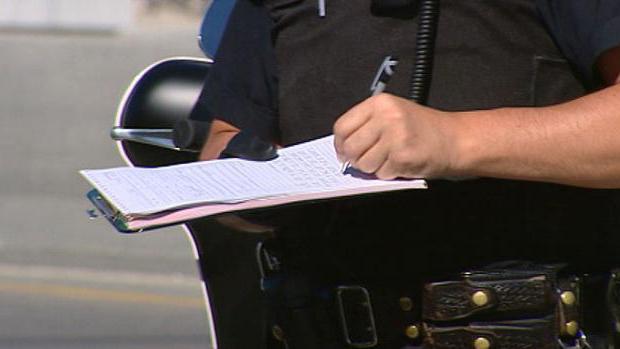
Excess fines vary in amounts. They directly depend on the speed with which your vehicle was traveling. For example, you exceeded 20 km / h, which means you will get off with a fine of 500 rubles. And if at 40 km / h, then your wallet will lose from one to one and a half thousand. But it is better not to violate traffic rules. The vehicle speed must not exceed the permissible maximum. So you protect yourself and the rest.



